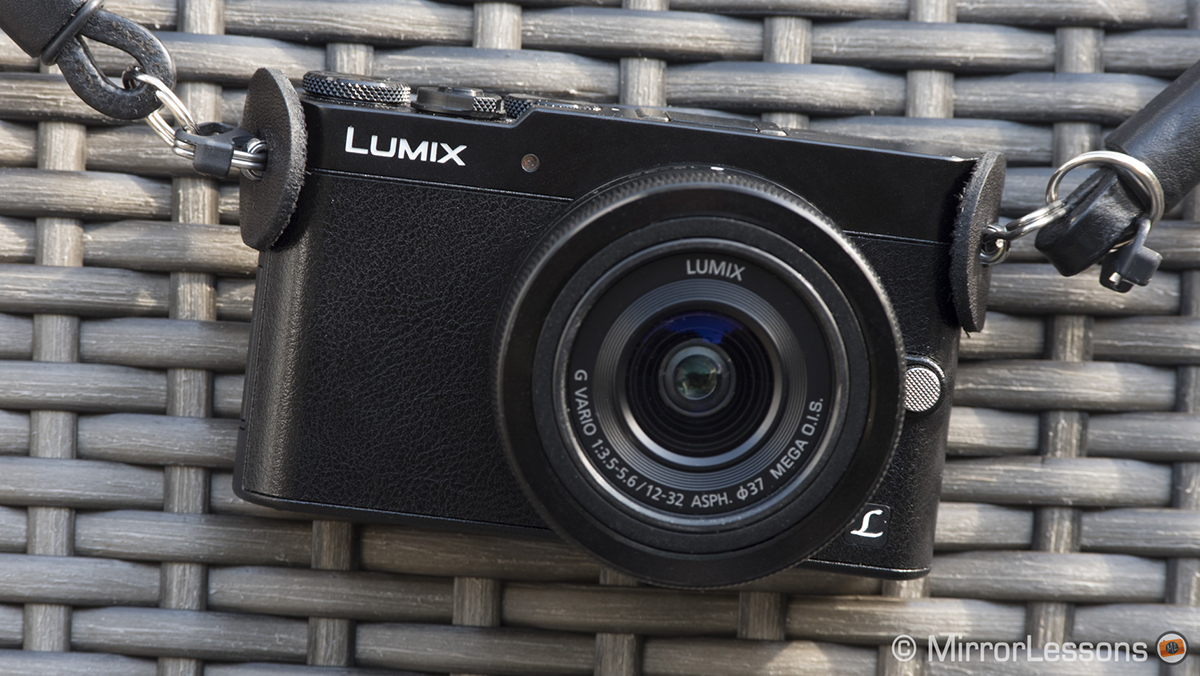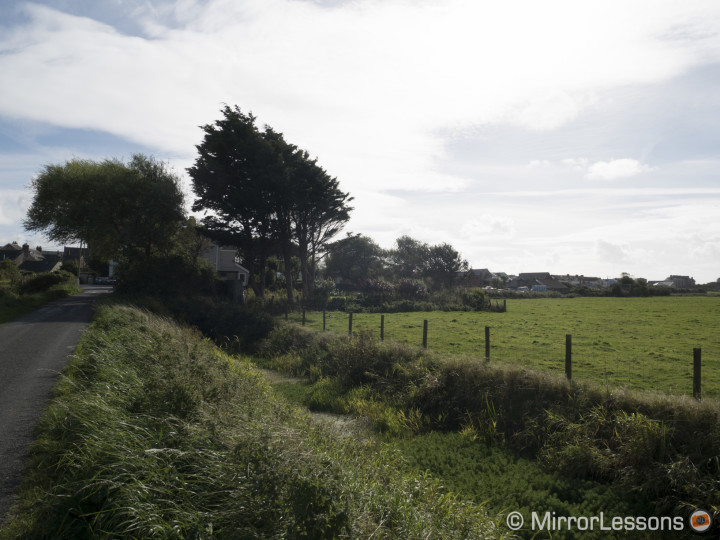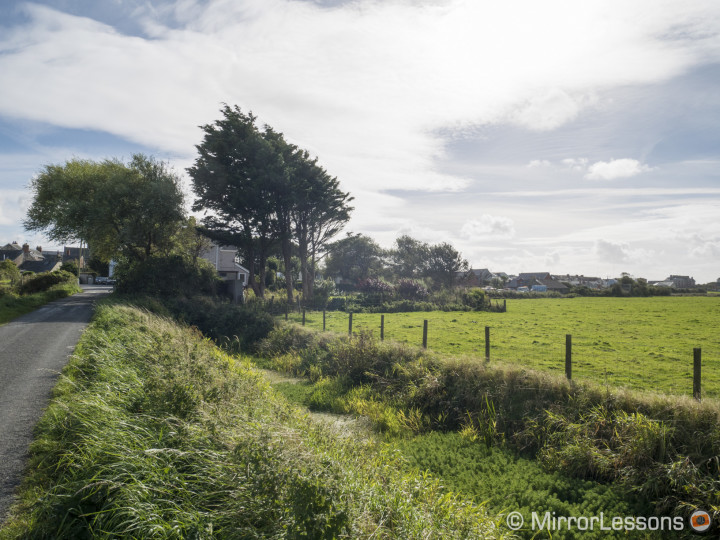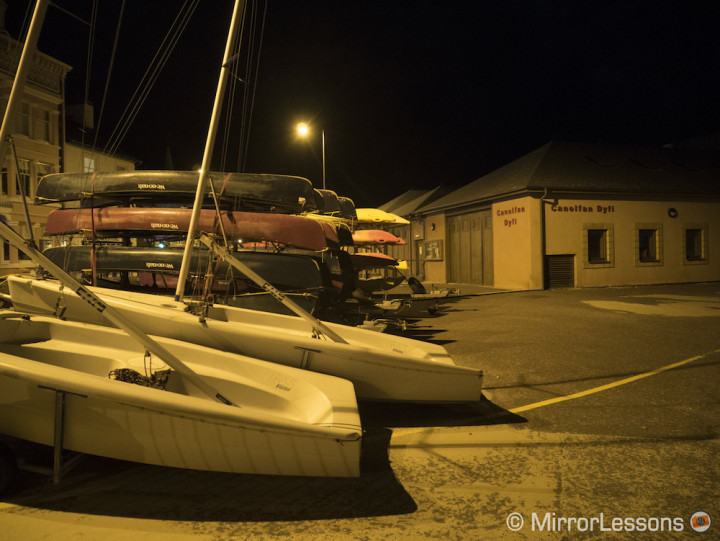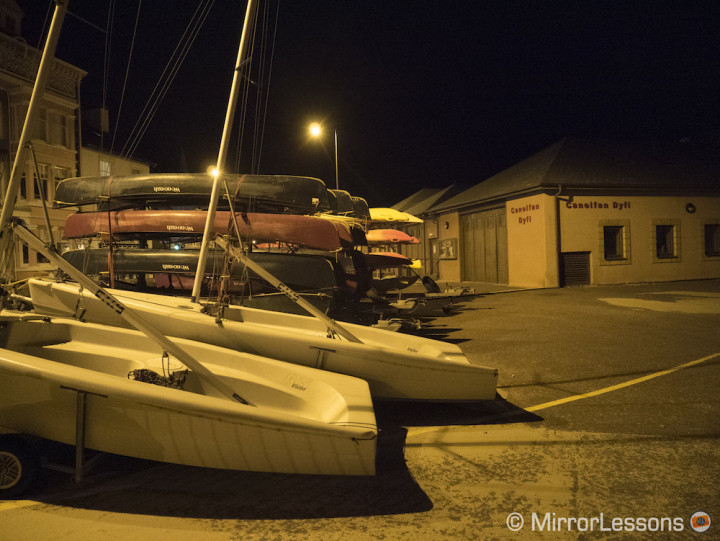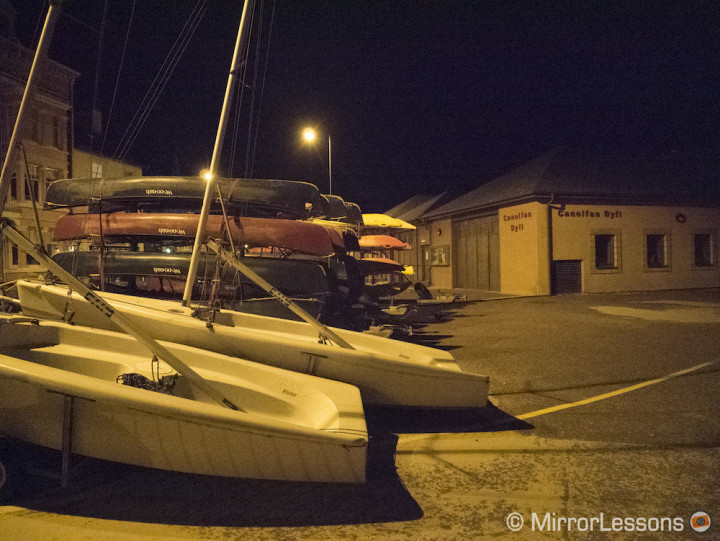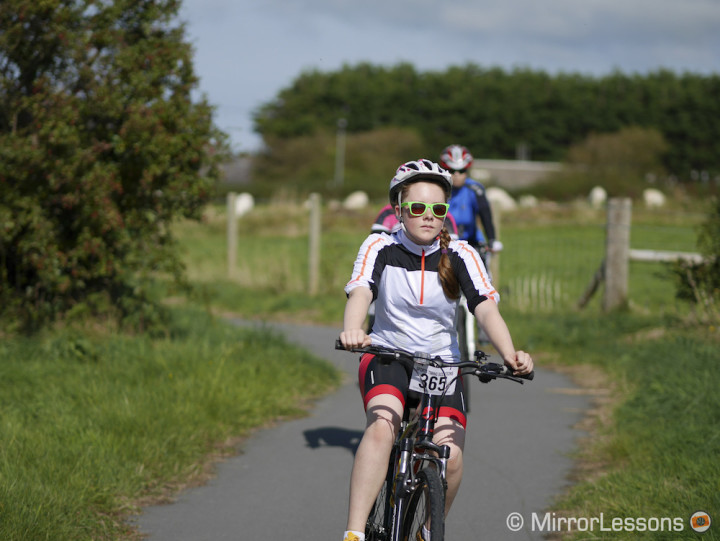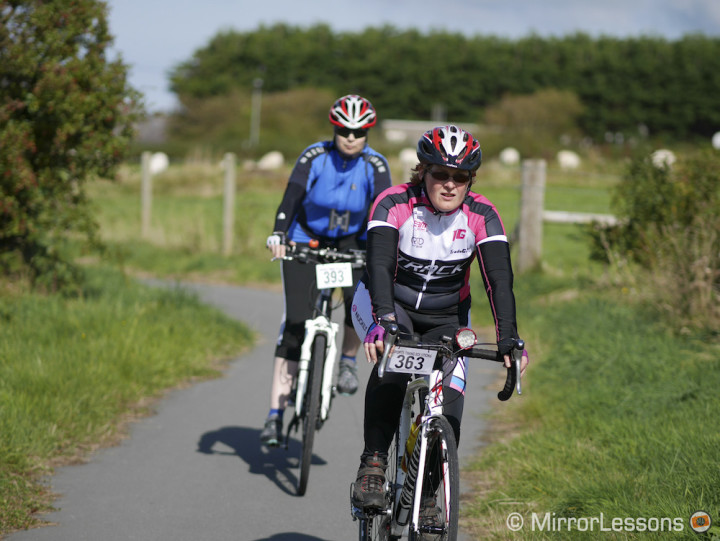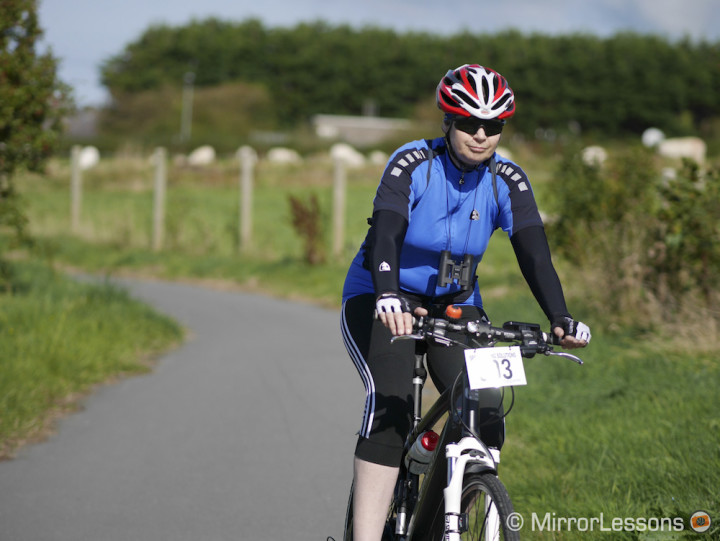The Panasonic Lumix GM5 is such a tiny camera that at first glance, you would assume that it was nothing more than a simple point and shoot. Upon closer inspection, however, you’d soon notice the presence of an interchangeable mount and a surprisingly large sensor. This is the brilliance of the Lumix GM5 – while it may be small on the outside, it packs the same amount of power on the inside as many of the other larger mirrorless cameras on the market today.
Are you curious to know more about this tiny gem? Then let’s keep reading!
Design and Ergonomics
When I first held the GM5 at Photokina in 2014, I wasn’t fully convinced that a camera so small could be a good match for the lenses in the Micro Four Thirds series, most of which are bigger and heavier than the camera itself!
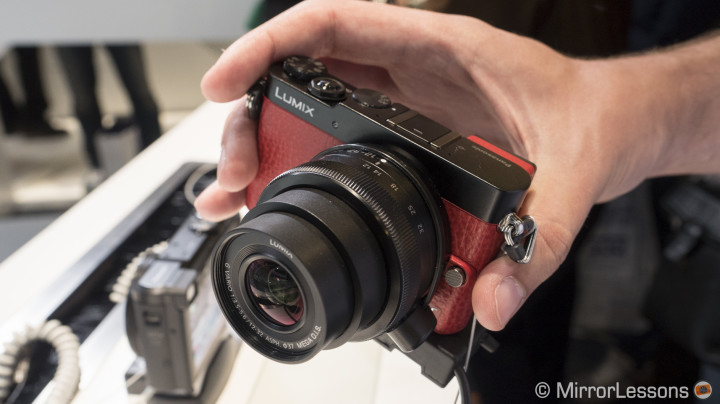
My opinion on the matter has shifted a little since then. While I definitely wouldn’t use any of the professional Micro Four Thirds zooms with this camera, most of the primes, pancake lenses and kit zooms are a great fit. The largest lens I used on the GM5 was the M.Zuiko 75mm f/1.8 and as long as I supported the combo by holding the lens, it handled just fine.
Some lenses I’d recommend for the GM5 are the:
- Lumix 14mm f/2.5 (landscape)
- Lumix 20mm f/1.7 (street)
- Lumix 42.5mm f/1.7 (portraiture)
- Lumix 12-32mm f/3.5-5.6 (all-purpose)
- Lumix 35-100mm f/4.0-5.6 (all-purpose)
The GM5’s body
The body itself is quite pleasant to hold, feels really solid and features a small yet comfortable thumb grip on the rear. If you have large hands and feel you need a more substantial grip, you may want to check out the handmade bamboo grip from J.B. Designs. It will increase the size of the camera but you’ll have the benefit of improved ergonomics.
The camera can easily fit inside a jacket pocket or small handbag with the kit lens or a small prime attached but it is too large to fit inside the pockets of your trousers.
The buttons and dials are both sturdy and easy to find even with your eye at the viewfinder, and I haven’t wound up pressing one of them accidentally. My only regret is that none of the buttons on the right-hand side of the camera are customisable (e.g. the movie button). For example, it would be great to use the movie button to activate Focus Area Set for those times when changing the AF point on-screen isn’t practical.
It doesn’t come with a built-in flash but it does make room for a hot shoe to which you can attach all sorts of (reasonably sized) accessories, including the small external flash that comes with the camera.
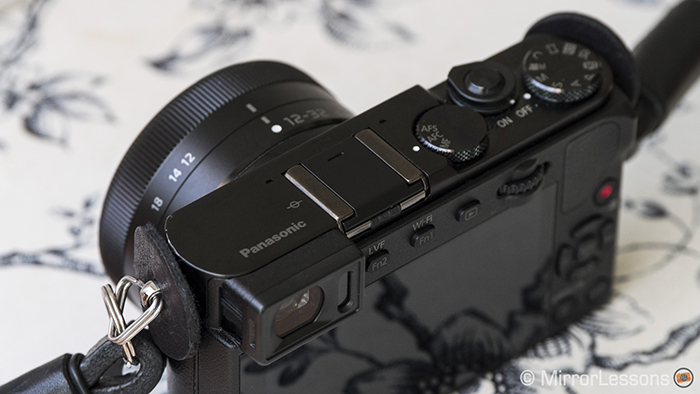
The EVF (electronic viewfinder) and LCD screen
The biggest physical difference between the original GM1 and the GM5 is the presence of an EVF. It is bright and crisp with a resolution of 1166k dots. I personally feel it is a smart addition but, being so small, it will literally give you a headache if you rely on it too much. It really comes in handy when the light is too bright to see the LCD screen or when I want to keep the camera as steady as possible for shots taken at slow shutter speeds. You’ll also appreciate the fact that it doesn’t add any extra bulk to the body of the camera.
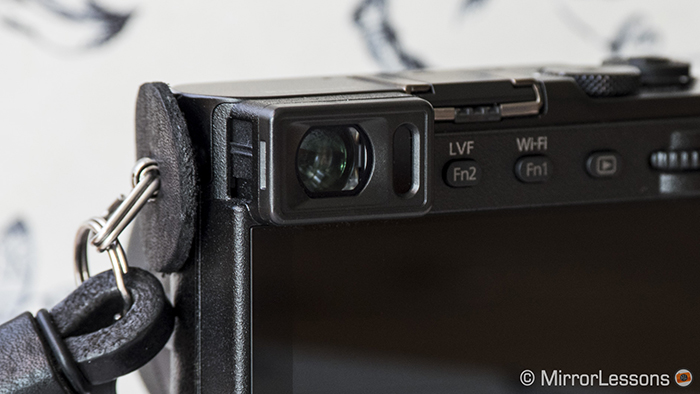
Unlike most other Lumix cameras, the camera doesn’t come with a tilting screen but it is bright, clear and touch sensitive.
Ease of Use
Something Mathieu and I have always loved about Lumix mirrorless cameras is their intuitiveness and the GM5 is no exception. If you are familiar with the basic settings of a digital camera, it should be easy to use right out of the box.
On the top plate, you have the ubiquitous mode dial with the PSAM modes, iAuto mode, scene modes, art filters, panorama, custom mode and a movie mode. It is flanked by the shutter release that doubles up as a sturdy on/off switch, and a smaller focus mode dial with AF-S (single autofocus), AF-C (continuous autofocus) and MF (manual focus) options.
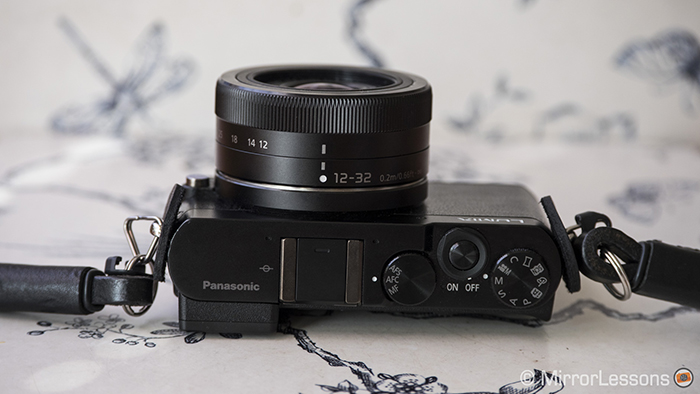
On the rear, more advanced shooters have access to the ISO, white balance, autofocus and drive modes via the four-way control pad, as well as a Wi-Fi button, movie button and access to the Quick menu. There are even 7 customisable function buttons (2 physical/5 virtual) so you can create shortcuts to your favourite functions. Despite the camera’s size, you barely have to dig into the menu to access the basic settings.
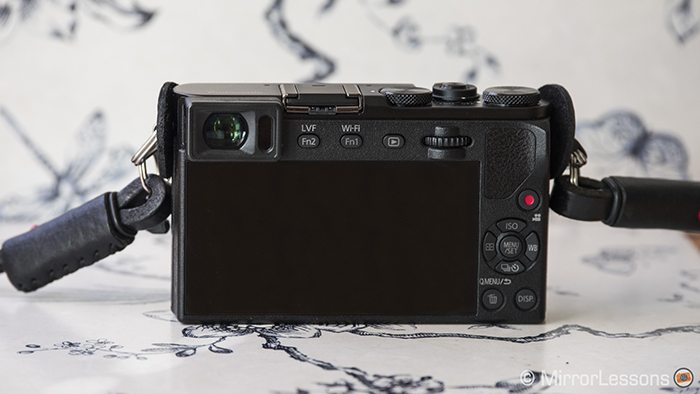
The touch screen also adds to the camera’s usability. You can use it to change your autofocus point, select options from the menu, or flip through your images. It isn’t a flip screen as I mentioned above, but this is an understandable compromise Panasonic had to make in order to keep the camera compact.
A small complaint is that when you hold the camera vertically (or if you use your left eye to shoot), your nose comes in contact with the touchscreen. The camera sometimes confuses your nose with a finger and may accidentally change the position of the AF point. A work-around is to deactivate Touch AF but keep Touch Screen and Touch Tab to On.
Image Quality


The true feat of this little camera is not just the size but the fact that Panasonic was able to equip it with the same 16MP Four Thirds sensor found inside the Lumix GX7.
As expected, the image quality produced by the Lumix GM5 is excellent. The images are bright, detailed and punchy, even when viewed at full resolution. You may notice that the files have a slightly cooler rendering than those from other cameras in natural light but you can easily adjust the white balance of the Raw files in camera or in post-production to suit your taste.

Should you decide to shoot JPGs, there are a number of Photo Styles you can choose including Vivid, Standard and Monochrome for example. For further control, you can also adjust the contrast, sharpness, noise reduction, colour tone and filter effect of each Photo Style.

As with other Micro Four Thirds sensors, the dynamic range is very good. It is easer to recover details from the shadows than from the highlights, so it is better to expose for the latter. The metering is also very accurate overall.
As for the high ISO performance, your personal tolerance for noise will determine what you consider useable. Personally speaking, I have no trouble pushing the camera up to ISO 3200 for general use and ISO 6400 for web use. Anything higher results in an excessive noise and a noticeable loss in detail.
Autofocus and Performance
We all know that the Lumix GM5 wasn’t designed to be a sports camera but I couldn’t resist testing it out at the Cambrian Coast Sportive cycling event here in Wales over the weekend. With the M.Zuiko 75mm f/1.8 attached, it really looked as if the tiny camera was trying to compensate for something!
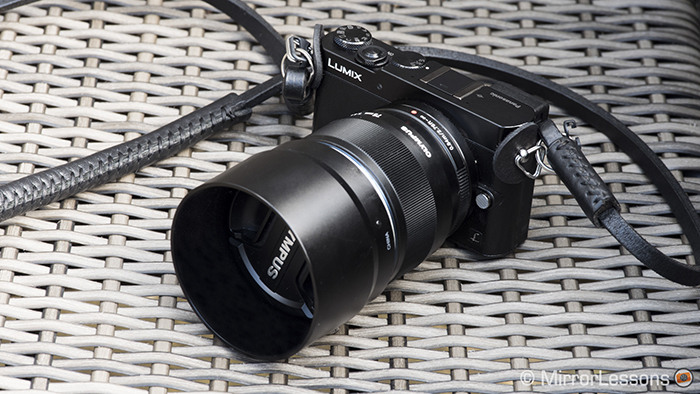
The camera utilises a contrast detect autofocus system with a maximum continuous shooting rate of 5.8fps (5fps with tracking activated).
I have to say that the autofocus performance of the GM5 surpassed my expectations. It easily tracked the cyclists as they came towards me, delivering only a few slightly blurry shots here and there but quickly regaining focus whenever it was lost. For example, in the series below featuring a family of three in single file, the camera was able to jump from one cyclist to another as they passed through the frame.
Although all the AF combinations worked well in terms of focus accuracy including 1 area and pinpoint, I found the ideal settings to be C-AF with the 23 AF mode and Fine JPG. I say JPG because the GM5’s buffer isn’t very good with Raw/JPG activated – it will take a burst of 7 shots, then slow down significantly regardless of whether you are in High, Medium or Low burst mode. The example below shows how the buffer in High burst mode filled up before I could capture the train.
The camera will continue to shoot for much longer if you only take JPG files.
If you absolutely need Raw files, you may want to set the camera to Medium or Low burst. Doing so will still give you 7 shots before the buffer fills up, but they will be distributed over a longer shooting period rather than crammed into a fleeting burst.

Tracking too was effective but I found that the camera would sometimes completely lose focus for no apparent reason, only to regain it again after a few shots. This was especially true if the cyclists came at me from an angle rather than straight on.
Since the camera’s mechanical shutter only goes up to 1/500th of a second, you’ll need to use the GM5’s electronic shutter for any sort of fast action, especially on a bright sunny day. (Be aware that this can cause rolling shutter.)

As for the single AF, it is blazingly fast even in low light. The only time it really slows down is in near pitch black conditions. The face/eye detection works well but I much prefer to manually select my own AF point for portraits.
Despite the GM5 not being designed for action, I was happy to see how well it copes with fast moving subjects in good light. If it can deal with cyclists, it can most certainly deal with kids and pets running around, which is the most likely scenario this camera would encounter.
Video
Since the GM5 is part of the pre-4K generation of Lumix cameras, it does not have 4K Video or 4K Photo. However, casual video shooters will find the Full HD recording at 50/25/24p in AVCHD format and 50/25p in MP4 format more than satisfactory. When you switch to movie mode via the Mode dial, the screen will automatically assume a 16:9 aspect ratio.
You have full creative control over the video functions, including shutter speed, aperture, ISO, exposure, and effects. There isn’t a mic input but this can only be expected from a camera this small. Instead, audio is recorded via the built-in stereo microphones.
Some fun video features you’ll certainly want to try are Time Lapse and Stop Motion. You can see a good example of a stop motion video taken with the GX7 in our dedicated article.
In response to the proliferation of video-centric social networks like Snapchat and Vine, Panasonic has added a Snap Movie Mode which lets you record short 2, 4, 6 or 8 second clips with effects like Pull Focus and Fade. With Pull Focus, you can tell the camera to transition from one focus point to another during the clip. Fade, on the other hand, makes it possible to transition from monochrome to colour and vice versa. Although the idea is fun and well-executed, I feel it is unlikely that the average person would choose a digital camera over a smartphone to make a short video for social media use.
Other Features – WiFi, silent shutter, panorama

WiFi has become a standard on almost all modern digital cameras but not every image app delivers the same reliability and performance. Overall, we’ve found the Panasonic Image App to be one of the better apps. It is very easy to use with the iPhone 5s (our phone) and provides lots of manual control over the most important settings. By default, it is accessible via the WiFi button beside the EVF.
As has become the standard on most Lumix cameras, the GM5 also has a silent shutter mode, allowing you to be discreet at quiet venues or when doing street photography.
The Panorama mode stitches a series of images together in-camera to produce a JPG and does a very good job. By default, the panorama mode has you shoot from left to right but you can change the direction in the menu to right to left, up to down and down to up. You can also terminate the panorama before it has finished by pressing the shutter button. Below you can see an example taken in a field.

GM5 vs RX100 series
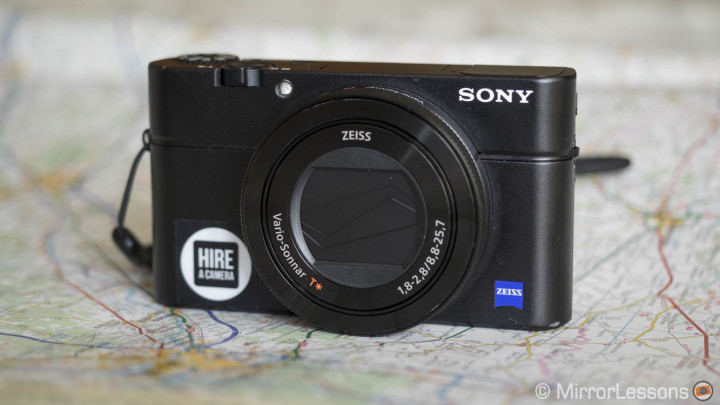
The fact that the pocketable Sony RX100 series has a 1-inch sensor doesn’t stop it from being one of the GM5’s primary competitors. Besides having a built-in EVF like the GM5 and an equally compact body, the latest iteration, the RX100 IV, has many other features that make the GM5 look like a camera from the dark ages including 4K video, slow motion video, in-camera stabilisation, a tilting screen, a bigger buffer (especially for JPG shooting), a built-in ND filter and more megapixels. However, we mustn’t forget that the GM5 has the advantage of interchangeable lenses, a touchscreen and a hotshoe for accessories. The GM5 is also quite a bit cheaper than the RX100 III and IV but isn’t so different in price from the RX100 I or II.
GM5 vs GF7
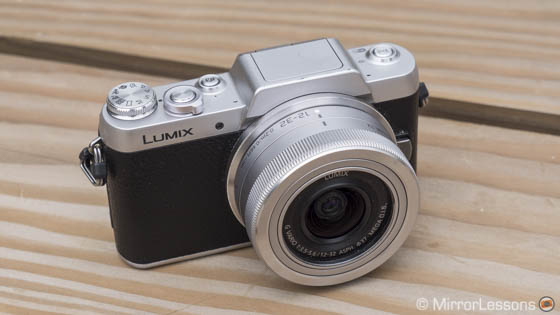
The GM5’s main rival actually lies within its own range of cameras. The GF7 is just as small as the GM5 and while it lacks an electronic viewfinder and hot shoe, it has an articulating touchscreen. Barring the price (the GF7 is about $300 cheaper), everything about the two cameras is basically the same.
Conclusion

My ambivalence toward the Lumix GM5 has definitely faded since having the chance to use it for two weeks. Even though most mirrorless interchangeable lens cameras are compact and light in comparison to DSLRs, very few compare to the kind of portability you get with the GM5. It is the kind of camera I’d happily take on a mini-vacation where spending time with family and sightseeing would take priority over serious photography.

The only catch is the price. At around $700 new on the current market (or $500 second-hand), you’re paying an awful lot of money for compactness and an EVF, especially when you consider that more recent cameras like the Lumix G7 cost about the same.
 What I like about the Panasonic Lumix GM5:
What I like about the Panasonic Lumix GM5:
- As small as a compact camera
- Very intuitive and fun to use
- Image quality is on par with other MFT cameras
- Very good AF performance for such a small camera
- Endowed with many of the latest features (silent shutter, touch screen, WiFi, panorama, etc.)
- EVF is bright and doesn’t take up too much space
 What I don’t like about the Panasonic Lumix GM5:
What I don’t like about the Panasonic Lumix GM5:
- EVF is very small and difficult to look through for long periods of time
- Limited buffer capabilities in Raw/JPG mode
- No tilting screen (but this is an understandable compromise)
- On the expensive side
